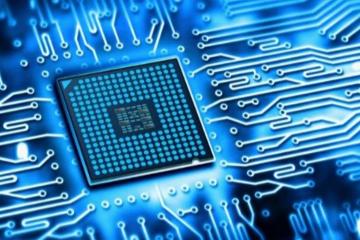The global semiconductor shortage continues to loom large, as companies like TSMC (Taiwan Semiconductor Manufacturing Company) lay down plans to build six new 5nm fabrication plants in the United States, and Samsung gears up for its own manufacturing presence thereMeanwhile, China's SMIC (Semiconductor Manufacturing International Corporation) has received the green light to procure necessary production equipment and materials, albeit the reality is that constructing semiconductor manufacturing facilities takes timeMass production is still several years away.
The push for revitalizing domestic manufacturing in the U.Shas not yet manifested substantial resultsHowever, the specific arena of chip fabrication offers a glimmer of hopeOnce these advanced fabrication plants are constructed, the U.Scould potentially reclaim a strategically advantageous position in the global semiconductor landscape.
The consequences of the semiconductor crisis highlight its significance to the entire industrial ecosystem
Advertisements
For instance, automotive manufacturing can grind to a halt due to a mere handful of chips, with cars worth tens of thousands of dollars unable to be delivered merely because of an absence of chips costing less than ten dollarsThe impact of insufficient semiconductor capacity serves as a stark illustration of its suppressive effects on economic growthThis concern has prompted the U.SDepartment of Defense to prioritize the development of microelectronics, reflecting the strategic nature of the semiconductor sector, especially in the context of the technological war being waged against China.
Addressing this predicament inevitably brings the topic of rare earth elements (REEs) into focus.
Considered a potential countermeasure against U.Sactions, the development of REEs had earlier been environmentally damaging
Advertisements
For decades, China provided the majority of the world’s rare earth resources at extremely low prices, leading other nations to forgo investment in REE extraction technologiesThe low cost of rare earths meant their extraction and refining were not profitable, leaving the market predominantly to China which now holds the expertise in advanced refining techniques.
It was only when China imposed restrictions on its rare earth exports that the West recognized its vulnerability: while resources might be accessible, the technology necessary for extraction was lackingDeveloping such technology is no trivial task and cannot be achieved overnight.
An enormous production capacity not only reduces costs but can also compress industry profit marginsThis dynamic inadvertently allows truly efficient firms and countries to emerge stronger
Advertisements
China finds itself in a favorable position with its unmatched scale.
Frequently tagged as a "developed country crusher," China's capacity to dominate once it breaks into a particular industry means that sector profitability plummets, leading developed nations to abandon pursuits altogether.
Industries like home appliances, solar power, mobile phones, and computers have all experienced a shift from the West to China in this very manner.
The U.S.'s technology war aims to keep China operating at the lower ends of the industrial chain, a strategy designed primarily to protect its own advanced sectorsThis approach is arguably unethical; the expected norm would be to improve one's efficiency rather than curtail another's growth.
Compared to other industries, semiconductor manufacturing is particularly intricate
- Han's M&A Faces Hurdles in Hong Kong
- 2024: A Milestone Year for AI
- Polysilicon Production Cuts to Impact PV Market
- Western Chip Firms Double Down on China
- Hong Kong Dividend Plays Offer Value
Simultaneously, the country faces technological embargoes that prevent access to advanced machinery, necessitating a remedial phase.
Thus, while expanding production capacity, China cannot replicate the U.S.'s direct jump to advanced technologiesInstead, it benefits from the established processes of mature technology, notably lithography machines capable of producing chips at 28nm and aboveEven in these realms, China remains relatively insulated from U.Sinfluence.
By rapidly scaling up mature production capacities, China can continue to drive down costs.
There exists a dual policy of encouraging the adoption of domestically produced equipment while simultaneously ramping up capacityManufacturers such as Shanghai Micro Electronics and related component companies gain volume, evolving their expertise and funding for new technologies — highlights of the process that underscore the necessity of scale.
What if an oversupply of mature technology emerges? A reference to the case of China's state grid may offer insights.
The initial design of the power grid incorporated ample surplus capacity

Rather than envisioning power usage strictly according to immediate needs or projecting it for only a few years ahead, extensive foresight was exercisedThis proved remarkably visionary as the fast-paced growth of China's economy led to swift escalations in electricity demandsRarely has the country faced widespread issues of blackouts or factory shutdowns due to insufficient electrical supplyThe notable exception came earlier this year with extreme cold, resulting in localized power cuts, emphasizing the importance of building infrastructure with adequate reserve capacity.
A similar rationale applies to semiconductor manufacturingIn the future, trends such as artificial intelligence, the Internet of Things (IoT), 5G technology, big data, and the electrification of vehicles demand an insatiable appetite for chipsThe perfect example is the IoT; equipping each device with chips is a prerequisite for functionality
Thus, much like electric power, semiconductor supply must include sufficient reserves to circumvent a repeat of the current chip crisis, which could otherwise disrupt industries, leading to monumental economic losses.
When mature production capacity is sufficiently robust, it opens avenues for providing foundry services to international clients at competitive prices.
Might this oversaturation raise concerns over profitability? This prospect sounds more daunting for Western enterprises, considering the landscape.
A robust mature technology base promises to meet China's requirements in scientific exploration, military endeavors, and researchFor businesses, chip tape-out expenses are often manageable, but educational institutions often struggle to absorb these costs